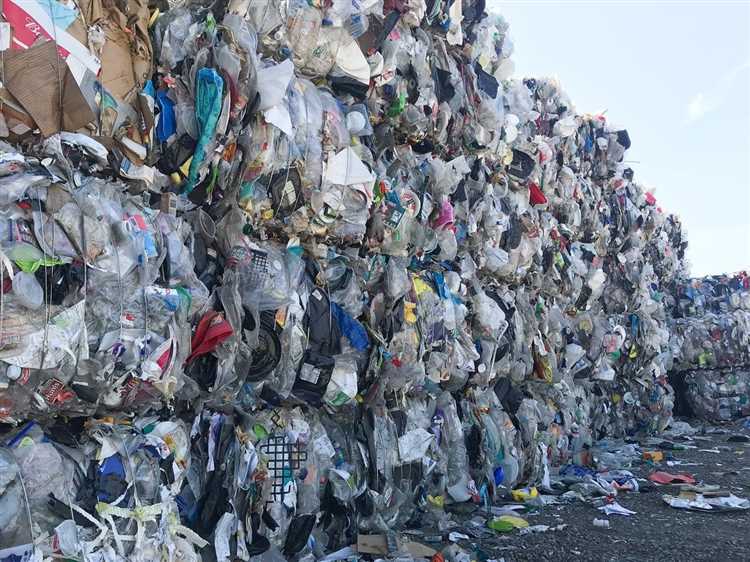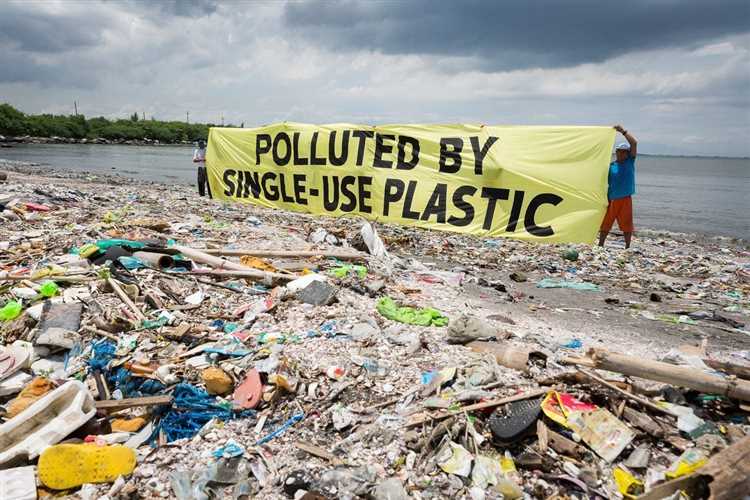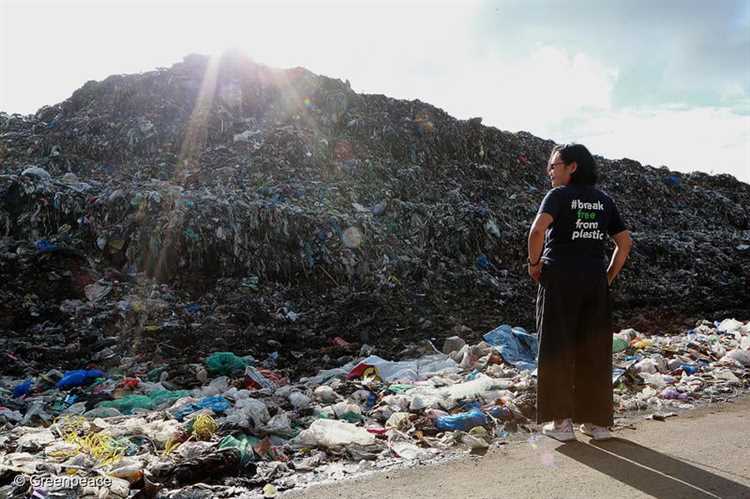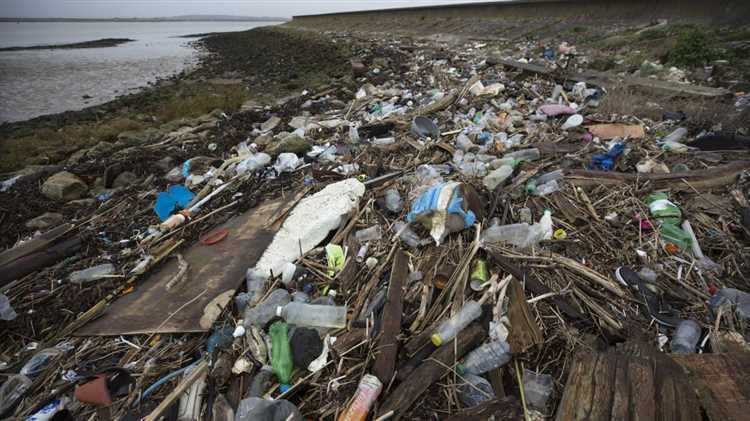
Plastic has become an integral part of our modern lives, but its widespread use has led to a growing environmental crisis. The United States, as one of the largest consumers and producers of plastic in the world, faces significant challenges when it comes to the plastic problem. This article will explore the causes, consequences, and potential solutions to address this urgent issue.
One of the primary causes of the plastic problem in the US is the high demand for single-use plastic items. From water bottles to food packaging, these disposable products contribute to massive amounts of waste that often ends up in landfills or pollutes our oceans and natural ecosystems. Additionally, the convenience and affordability of plastic make it a preferred choice for many industries, resulting in a constant production and consumption cycle.
The consequences of this plastic problem are far-reaching and devastating. Plastic waste can take hundreds of years to decompose, causing long-lasting pollution and harming wildlife. Microplastics, tiny plastic particles that result from the breakdown of larger plastic items, have permeated our water systems, contaminating the food chain and posing potential health risks to humans.
Fortunately, there are several solutions that can help alleviate the plastic problem in the US. Increasing awareness about the environmental impact of plastic is crucial, as it fosters a collective responsibility to reduce consumption and find sustainable alternatives. Recycling and waste management programs should be improved and expanded, ensuring that plastic waste is properly collected, sorted, and processed. Additionally, advocating for government regulations and corporate responsibility can encourage the use of biodegradable materials and the development of innovative packaging solutions.
- Plastic Waste in the United States: A Growing Concern
- Environmental Impact of Plastic Waste
- 1. Pollution
- 2. Ocean contamination
- 3. Carbon emissions
- 4. Microplastic contamination
- Current State of Plastic Waste in the US
- Rapid Increase in Plastic Production and Consumption
- Inadequate Plastic Waste Management System
- Impact on the Environment and Health
- Efforts Towards Plastic Waste Reduction
- Causes of the Plastic Problem
- Excessive Plastic Consumption and Production
- Improper Plastic Waste Management
- Lack of Infrastructure
- Lack of Education and Awareness
- Policy and Regulation Gaps
- Consequences of Plastic Pollution
- 1. Harm to Marine Life
- 2. Contamination of Water Sources
- Threats to Marine Life
- 1. Entanglement
- 2. Ingestion
- 3. Habitat Destruction
- Q&A:
Plastic Waste in the United States: A Growing Concern
Plastic waste has become a significant issue in the United States, with increasing rates of consumption and improper disposal leading to detrimental environmental effects. As one of the largest producers and consumers of plastic in the world, the US has a responsibility to address this growing concern.
One of the main causes of plastic waste in the US is single-use plastics. These items, such as plastic bags, bottles, and straws, are used once and then discarded, often ending up in landfills or polluting waterways. The convenience of these products has led to their widespread usage, exacerbating the plastic waste problem.
| Causes | Consequences | Solutions |
|---|---|---|
| Increase in consumption of single-use plastics | Environmental pollution | Implementation of bans or fees on single-use plastics |
| Inadequate recycling infrastructure | Harm to wildlife | Investment in recycling facilities and education on proper recycling |
| Limited awareness about the impact of plastic waste | Health risks for humans | Public awareness campaigns and education about plastic alternatives |
The consequences of plastic waste are far-reaching. Plastic pollutes our land, air, and oceans, posing a threat to wildlife and ecosystems. Additionally, the production and disposal of plastics contribute to greenhouse gas emissions and exacerbate climate change. The health risks associated with plastic waste, such as chemical leaching and ingestion by animals and humans, are also a significant concern.
To address the plastic waste problem in the United States, various solutions can be implemented. These include the implementation of bans or fees on single-use plastics to reduce consumption, as well as investing in recycling infrastructure to ensure proper disposal and processing of plastics. Public awareness campaigns and education about plastic alternatives can also play a crucial role in changing consumer behavior and reducing plastic waste.
In conclusion, the issue of plastic waste in the United States is a growing concern that requires immediate attention. By understanding the causes, consequences, and potential solutions, we can work towards mitigating the environmental and health impacts of plastic waste and creating a more sustainable future.
Environmental Impact of Plastic Waste

Plastic waste has significant environmental consequences that are becoming increasingly apparent. Below are some of the major impacts:
1. Pollution
Plastic waste contributes to pollution in various ways. When plastic items are not disposed of properly, they often end up polluting the land and water bodies, taking hundreds of years to decompose. This pollution poses a threat to animals, as they may ingest or become entangled in plastic waste, resulting in injury or death.
2. Ocean contamination
Plastic waste is a significant contributor to ocean pollution. It is estimated that over 8 million tons of plastic end up in the oceans each year. This waste not only harms marine life but also disrupts entire ecosystems. Animals often mistake plastic debris for food, leading to starvation or suffocation. Additionally, the presence of plastic waste in the ocean can affect water quality and damage coral reefs.
3. Carbon emissions
The production and transportation of plastic contribute to carbon emissions, which contribute to climate change. Plastic production involves the extraction and refinement of fossil fuels, such as petroleum and natural gas, releasing greenhouse gases into the atmosphere. Additionally, the incineration of plastic waste also releases harmful emissions.
4. Microplastic contamination
Plastic waste can break down into smaller pieces known as microplastics, which are less than 5mm in size. These microplastics are found in various ecosystems, including soil, water, and even the air. They can be ingested by animals and may accumulate in their tissues, potentially entering the food chain and affecting human health. The long-term impacts of microplastic contamination are still being studied.
Overall, the environmental impact of plastic waste is extensive and requires immediate attention. Efforts should focus on reducing plastic consumption, improving waste management systems, and promoting recycling initiatives to mitigate the damage caused by plastic waste.
Current State of Plastic Waste in the US

Plastic waste has become a significant issue in the United States, with the country being one of the largest producers and consumers of plastic globally. The current state of plastic waste in the US is alarming, as it poses significant environmental and health risks.
Rapid Increase in Plastic Production and Consumption
In recent years, there has been a rapid increase in plastic production and consumption in the US. According to the Environmental Protection Agency (EPA), the country generated 35.4 million tons of plastic waste in 2018 alone. This number has continued to rise, driven by various factors such as population growth, urbanization, and changes in consumption patterns.
The increased production and consumption of plastic have contributed to the mounting plastic waste problem in the US. Plastic products, including single-use items such as plastic bags, bottles, and packaging, have become an integral part of daily life for many Americans.
Inadequate Plastic Waste Management System
While plastic waste continues to accumulate, the US lacks an effective and comprehensive waste management system to handle this issue properly. Although recycling programs exist in many communities, the overall recycling rate for plastic remains relatively low.
According to the EPA, only 8.7% of plastic waste was recycled in the US in 2018. This low recycling rate can be attributed to various challenges, including inefficient sorting methods, limited recycling infrastructure, and a lack of awareness among the public.
As a result, a significant amount of plastic waste ends up in landfills and incinerators, contributing to pollution and greenhouse gas emissions. Some plastic waste also finds its way into waterways, posing threats to marine life and ecosystems.
Impact on the Environment and Health
The accumulation of plastic waste in the US has severe consequences for the environment and human health. Plastic debris can persist in the environment for hundreds of years, releasing harmful chemicals and microplastics as they degrade.
Marine animals often mistake plastic pieces for food, leading to ingestion and entanglement, which can be fatal. The presence of plastic waste in water bodies also affects water quality and disrupts ecosystems.
In addition to environmental impacts, plastic waste can also have adverse health effects on humans. Plasticizers and additives used in plastic production can leach into food and beverages, potentially causing health problems such as hormone disruption and developmental issues.
Efforts Towards Plastic Waste Reduction
To address the plastic waste problem, there have been efforts towards plastic waste reduction in the US. Some states and cities have implemented bans or fees on single-use plastics, encouraging the use of more sustainable alternatives.
Furthermore, organizations and individuals have been advocating for increased recycling, improved waste management infrastructure, and the promotion of circular economy practices. These efforts aim to reduce plastic consumption, increase recycling rates, and ensure proper disposal of plastic waste.
| Key Statistics | Year |
|---|---|
| Total plastic waste generated | 35.4 million tons |
| Plastic recycling rate | 8.7% |
| Number of states implementing plastic bans | 10 |
| Number of cities with plastic bag fees | Over 100 |
The current state of plastic waste in the US demands immediate action to mitigate its harmful impacts. By reducing plastic consumption, improving recycling infrastructure, and promoting sustainable alternatives, it is possible to address the plastic problem and protect the environment for future generations.
Causes of the Plastic Problem
There are several causes that have contributed to the plastic problem in the United States. These causes include:
- Inadequate waste management practices: The current waste management practices in the US do not prioritize proper disposal and recycling of plastics. This has led to a significant increase in plastic waste that ends up in landfills or is improperly disposed of in the environment.
- Single-use culture: The convenience of single-use plastics, such as plastic bags, straws, and bottles, has led to a culture of disposable products. The demand for these items has skyrocketed, resulting in a massive production and accumulation of plastic waste.
- Lack of awareness and education: Many people are unaware of the negative environmental impact of plastic consumption and disposal. Without proper education and awareness campaigns, individuals may not understand the importance of reducing plastic waste or may not know alternatives to single-use plastics.
- Inefficient recycling infrastructure: While recycling is seen as a solution to the plastic problem, the recycling infrastructure in the US is not sufficient to handle the amount of plastic waste generated. Limited recycling facilities, lack of proper sorting and collection systems, and contamination issues all contribute to the inefficiency of plastic recycling.
- Lobbying and political influence: The plastic industry has a significant influence on policymakers and regulations, which can hinder the implementation of effective measures to tackle the plastic problem. Lobbying efforts from the industry have been successful in resisting stricter regulations on plastic production and promoting the use of plastics.
These causes have created a plastic problem in the US that is threatening our environment, wildlife, and human health. It is crucial to address these causes and work towards sustainable solutions to reduce plastic waste and its impact.
Excessive Plastic Consumption and Production
Plastic consumption and production in the United States has reached alarming levels in recent years. Americans have developed a culture of single-use plastic items, such as plastic bottles, bags, and containers, contributing to the excessive amount of plastic waste generated daily. This excessive consumption and production of plastic have significant environmental consequences.
The convenience-oriented lifestyle of Americans has led to a massive demand for plastic products. The availability and low cost of plastic items have made them an attractive choice for everyday use. However, this convenience comes at a high environmental cost. Plastic is made from fossil fuels, a non-renewable resource, and its production process releases greenhouse gases that contribute to climate change.
Moreover, plastic waste poses a severe threat to marine life. Plastic items, when improperly disposed of, often end up in water bodies, where they break down into smaller pieces known as microplastics. These microplastics can be ingested by marine animals, causing serious health problems and even death. Additionally, plastic pollution affects ecosystems, disrupts the natural balance of ecosystems, and damages habitats.
Addressing the issue of excessive plastic consumption and production requires a multi-faceted approach. Alternative materials, such as biodegradable or reusable options, should be promoted and made easily accessible to consumers. Additionally, manufacturers should take responsibility for reducing the use of unnecessary plastic packaging and invest in sustainable production practices.
Furthermore, education and awareness campaigns should be implemented to educate the public about the environmental impact of plastic consumption and encourage behavior changes. Recycling programs and waste management infrastructure should also be improved to ensure proper disposal and recycling of plastic waste.
By reducing excessive plastic consumption and promoting more sustainable practices, the United States can mitigate the negative consequences of plastic pollution and work towards a cleaner and healthier environment for future generations.
Improper Plastic Waste Management
Proper plastic waste management is crucial in tackling the plastic problem in the US. Unfortunately, the current state of plastic waste management in the country is inadequate, leading to several negative consequences.
Lack of Infrastructure

One of the main causes of improper plastic waste management is the lack of adequate infrastructure. Many cities and towns in the US do not have proper recycling facilities or waste management systems in place. This leads to a significant amount of plastic waste ending up in landfills or being incinerated, rather than being properly recycled.
Additionally, the absence of recycling facilities makes it difficult for individuals and businesses to dispose of their plastic waste responsibly. As a result, plastic waste often finds its way into rivers, oceans, and other natural environments, causing harm to marine life and ecosystems.
Lack of Education and Awareness
Another key factor contributing to improper plastic waste management is the lack of education and awareness among the general population. Many people are not aware of the negative effects of improper plastic waste disposal or the importance of recycling.
Education campaigns and initiatives aimed at raising awareness about proper plastic waste management are essential in addressing this issue. By educating the public about the benefits of recycling and providing them with the necessary information on how to recycle plastic waste correctly, we can encourage more responsible disposal practices.
Policy and Regulation Gaps
The lack of comprehensive policies and regulations regarding plastic waste management is another significant challenge. While some states and municipalities have implemented measures to reduce plastic waste, there is a need for a more coordinated and standardized approach at the national level.
Stricter regulations on single-use plastics, incentivizing businesses to adopt more sustainable packaging alternatives, and investing in the development of recycling infrastructure are some of the possible solutions that could be implemented to improve plastic waste management in the US.
In conclusion, addressing the issue of improper plastic waste management is crucial in mitigating the plastic problem in the US. By investing in recycling infrastructure, increasing education and awareness, and implementing effective policies and regulations, we can make significant progress in reducing plastic waste and protecting our environment.
Consequences of Plastic Pollution
Plastic pollution has far-reaching consequences for both the environment and human health. The proliferation of plastic waste poses a significant threat to ecosystems, wildlife, and biodiversity. The following are some of the key consequences of plastic pollution:
1. Harm to Marine Life
Marine animals are greatly impacted by plastic pollution. Large pieces of plastic can entangle and suffocate marine mammals, turtles, and seabirds. Birds and fish often mistake plastics for food, leading to internal injuries or blockages and ultimately causing death. Plastic pollution disrupts the delicate balance of marine ecosystems and threatens the survival of various marine species.
2. Contamination of Water Sources
Plastic waste in the form of microplastics and nanoplastics can contaminate water sources. These tiny plastic particles accumulate in rivers, lakes, and oceans, posing risks to the health of humans and animals that rely on these water sources. Consumption of contaminated water can lead to a range of negative health effects, including hormone disruption and reproductive issues.
3. Soil and Agriculture Impact
Plastic pollution not only affects bodies of water but also has detrimental consequences for soil and agriculture. When plastic waste is improperly disposed of or ends up in landfills, it can leach harmful chemicals into the soil. These chemicals can contaminate crops, negatively impacting food safety and security.
The consequences of plastic pollution are extensive, and urgent action is required to address this global issue. Efforts should focus on reducing single-use plastics, promoting recycling and waste management, and raising awareness about the importance of plastic pollution prevention. Only through collective action can we mitigate the consequences and create a more sustainable future for our planet.
Threats to Marine Life
The plastic problem in the US poses significant threats to marine life. A vast amount of plastic waste ends up in the oceans, causing disastrous consequences for the creatures that inhabit them.
1. Entanglement
Marine animals such as turtles, seals, dolphins, and whales often become entangled in plastic debris, such as discarded fishing nets, pack rings, and plastic bags. This entanglement can lead to injury, suffocation, or impaired movement, making it difficult for these animals to hunt, migrate, or breed.
2. Ingestion
Plastic pollution also affects marine life through ingestion. Many species mistake plastic items for food, especially small fragments that resemble their natural prey. Turtles, seabirds, and fish often ingest plastic, which can lead to internal injuries, blockages in their digestive systems, and starvation.
Furthermore, the toxins present in plastic materials can leach into the marine environment and accumulate in the tissues of the animals that consume them, resulting in long-term negative effects on their health and reproductive capabilities.
3. Habitat Destruction
The accumulation of plastic waste in marine habitats can cause significant destruction. Coral reefs, for example, are delicate ecosystems that provide a home for a wide range of marine life. Plastic pollution can damage and smother coral reefs, disrupting their symbiotic relationships and leading to the loss of biodiversity in these areas.
In addition, plastic debris can settle on the ocean floor, altering the structure and composition of benthic communities that rely on these habitats for shelter and food.
Overall, the threats posed by plastic pollution to marine life are extensive and urgent. Efforts must be made to reduce plastic waste, improve waste management systems, and promote sustainable alternatives to protect the delicate balance of marine ecosystems.